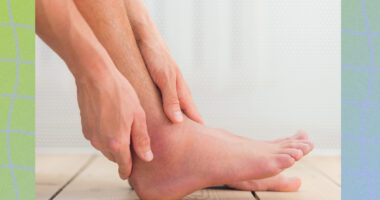
What Is Anaemia?
Anaemia is a condition that occurs when your body does not have enough healthy red blood cells or haemoglobin [1]. Anaemia is of different types, such as aplastic anaemia, iron deficiency anaemia, sickle cell anaemia, thalassemia, and vitamin deficiency anaemia [2].
Symptoms of anaemia
The signs of this condition vary depending on the cause, and in some cases, you may not have any symptoms [3]. The common symptoms of anaemia are fatigue, weakness, pale or yellowish skin, irregular heartbeats, shortness of breath, dizziness, chest pain, cold hands and feet and headaches [4]. In most cases, the symptoms of anaemia are not noticeable and can worsen as the condition worsens [5].
Causes of anaemia
Iron deficiency is the most common cause of anaemia [6]. The other causes are when your body does not make enough red blood cells, bleeding causes you to lose red blood cells more quickly than they can be replaced and your body destroys red blood cells (auto-immune condition) [7].

Types Of Anaemia
- Iron deficiency anaemia: This type is caused by a shortage of iron in your body.
- Vitamin deficiency anaemia: A diet lacking in folate and vitamin B-12 and other key nutrients can cause decreased red blood cell production, resulting in this type of anaemia [8].
- Aplastic anaemia: In most cases, the condition develops because of idiopathic reasons, i.e. unknown reasons. According to studies, it has been ascertained that aplastic anaemia is caused when the immune system mistakenly targets the bone marrow.
- Sickle cell anaemia: This type can be inherited and can be severe in some cases and is caused by a defective form of haemoglobin that forces red blood cells to assume an abnormal crescent shape.
- Haemolytic anaemias: This type of anaemias develops when red blood cells are destroyed faster than bone marrow can replace them.
Risk factors for anaemia
Menstruation, intestinal disorders, pregnancy, a diet lacking in iron, vitamin B-12 and folate, chronic conditions (cancer, kidney failure, diabetes), family history and other factors such as certain infections, blood diseases and autoimmune disorders increases your risk of anaemia [9].
Complications of anaemia
If not treated on time, anaemia can result in severe fatigue, pregnancy complications, heart problems and even death [10].

Can Anaemia Be Prevented?
Most types of anaemia cannot be prevented; however, iron deficiency anaemia and vitamin deficiency anaemias can be avoided by following a diet encompassed of a variety of vitamins and minerals [11]. Including the following in your diet can help prevent the onset of the afore-mentioned anaemias.
- Iron-rich foods such as beans, lentils, dark green leafy vegetables, and dried fruit. Beef and other meats are also rich in iron.
- Folate-rich foods such as dark green leafy vegetables, green peas, kidney beans, peanuts etc.
- Vitamin C foods such as citrus fruits and juices, peppers, broccoli, tomatoes, melons, and strawberries.
- Vitamin B12 foods such as meat, dairy products, and fortified cereal and soy products [12].

How Is Anaemia Treated?
The treatment varies depending on the cause. Anaemia caused by iron deficiency is treated by taking iron supplements and changing your diet [13]. Treatment for folic acid and vitamin C deficiency involves dietary supplements and increasing these nutrients in your diet.
READ RELATED: Edinburgh Castle, Scotland Is The Most Traveled Spot in Scotland!
 COVID-19: The Full List Of Coronavirus Symptoms
COVID-19: The Full List Of Coronavirus Symptoms
Anaemia of chronic disease does not have a specific treatment, for aplastic anaemia, the treatment includes blood transfusions to boost levels of red blood cells.
Anaemias associated with bone marrow disease is treated through include medication, chemotherapy, or bone marrow transplantation [14]. For haemolytic anaemias, the treatment includes avoiding suspect medications, treating infections, and taking drugs that suppress your immune system, which could be attacking your red blood cells.

Anaemia And Indian Women
Prevalence of anaemia is higher in India as compared to other developing countries [15]. And the numbers show that women are more affected than men. It is estimated that about 20-40 per cent of maternal deaths in India are due to anaemia and one in every two Indian women suffers from some form of anaemia [16].
According to surveys, India has the highest number of cases of anaemia in the world, citing reasons such as the high cost of healthcare facilities, poor food quality and the low status of women. Anaemia remains to be a major cause of maternal mortality and low birth weight in India. According to WHO, if the prevalence of anaemia at community levels is more than 40 per cent, it is considered as a problem of high magnitude, which is the condition is most states in India [17].
The reality of the situation points at the urgent need for improving the overall nutritional status of adolescents through nutrition education, community awareness and supplementation programmes.

On A Final Note…
Women’s health has always taken a backseat because of the different roles they play and the biggest responsibility of becoming a mother that only they can shoulder. Now, it is imperative for them to empower themselves with the right knowledge and take the right actions.
Source:






